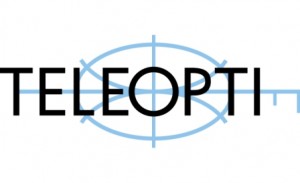Erlang C has been a WFM firm favorite for decades. Now there is an alternative.
Rebecca Philp, Product Knowledge Manager at Telelopti, discussing the benefits of applying Erlang A principles to manage service levels in the contact centre and how they relate to Workforce Management (WFM) Solutions.

Erlang C is predominantly used for queuing calculations based on call volumes and the number of agents necessary to achieve certain service levels. However, Erlang C assumes that people have infinite patience and while waiting times might appear to decrease, the queues grow infinitely. Erlang A, on the other hand, better reflects the psychological realities of customer patience. It recognizes that every customer has a finite patience span before they become frustrated and simply hang-up. By estimating average patience time or average time to abandon (ATA) to calculate average waiting probability, contact centres have a better chance of creating accurate forecasts and schedules that are relevant in today’s multi-channel world.
Of course, all contact centres really want is better forecasting accuracy – at least that’s what Teleopti’s customers tell us and whether they apply Erlang C or Erlang A principles, is a matter of choice and largely depends on the individual merits of their own contact center.
For the purposes of this exercise we throw the spotlight on the advantages of Erlang A and how they relate to automated Workforce Management (WFM) solutions.
5 Benefits of Erlang A to Workforce Management
1. Accurate forecasts
Consider the latest WFM solutions as vast vessels of knowledge that capture those all-important average abandon rates now and in the past. Understanding historical data to predict the future helps contact center leaders build proactive rather than reactive schedules.
2. Small changes make a difference
Most contact centres know the total number of calls they receive, the number answered and the number abandoned. Simply key this information into a WFM system using Erlang A to do all the work of calculating average patience times to give accurate schedules for staffing levels. The changes might only be small but can make all the difference between irate customers, abandoned contacts and a smooth customer experience.
3. Do more with less
By taking average patience times into account and then using Erlang A to calculate the number of employees required to meet demand, and maintain service levels, typically fewer resources are needed. This can reduce the temptation to overstaff and therefore reduce costs too.
4. Boost productivity
With better forecasting, more efficient schedules and reduced costs, boost productivity by maximizing idle time. Use WFM technology to schedule offline activities such as administration, training and weekly huddles. Allowing employees to give their full attention to customers during busy periods.
5. Drive intelligence with data
With rising customer expectations of what good service means, abandonment rates are an extremely important indication of how well service levels are achieved. The problem is that most contact centers didn’t have the technology to view them easily or analyze them properly – until now. Fortunately, modern WFM systems promote intelligent resourcing. By tapping into real-time data, contact center managers have the power to predict how many agents they need regardless of channel with a little help from either Erlang C or Erlang A.
At Teleopti, the laws of mathematics are essential to continual improvement and form an intrinsic part of our product development program. We apply both Erlang A and Erlang C principles to enhance and develop a comprehensive range of new technologies that drive efficiencies and performance in today’s contact centers. You simply choose the option that suits your set up best to give you the most benefit.
Additional Information

Teleopti, is a global provider of workforce management (WFM) software, offering a WFM solution that is sophisticated, localized and easy to use. As the largest “best-of-breed” vendor, Teleopti focuses on helping contact centers, back offices and retail stores improve customer service, employee satisfaction and profitability – through optimized, automated forecasting and scheduling.
Teleopti provides everything necessary to effectively manage staff, forecast demand, create schedules automatically, develop accurate and insightful reports and improve overall customer satisfaction.

For additional information on Teleopti visit their Website or view their Company Profile





